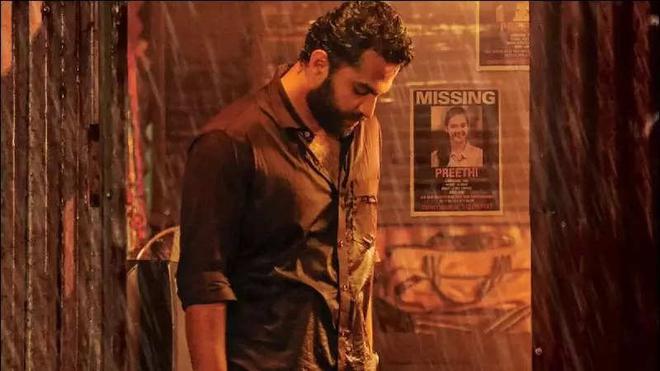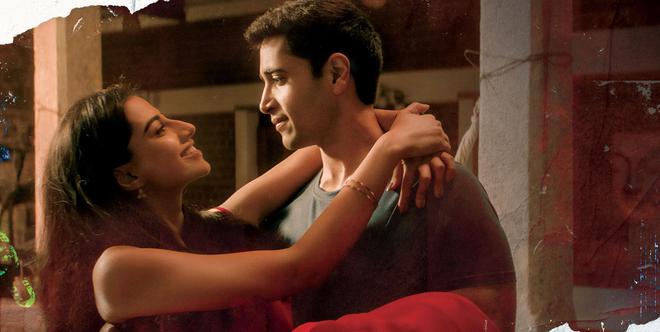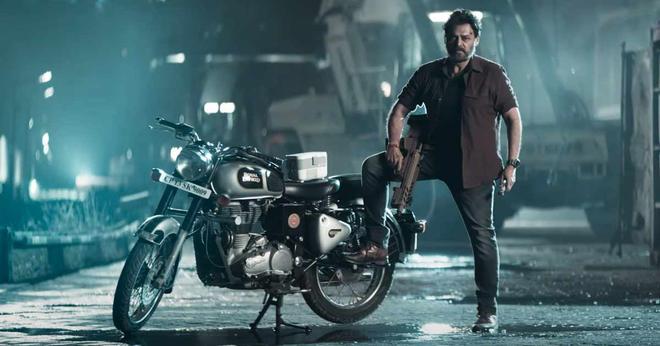When optometrist-turned-director Sailesh Kolanu debuted with the Telugu crime thriller HIT (Homicide Intervention Team) in which the protagonist worked with a Sherlock Holmes-like ability to try and solve crime while battling post-traumatic disorder, he made the audience curious. Sailesh followed it up with HIT 2, only to reveal that these films will be part of a ‘HIT universe’, each aiming to leave a bigger footprint. An ardent Kamal Haasan fan and an avid reader, the writer-director hopes to have his signature even as he moves on to direct bigger stars in his forthcoming films. Before HIT 3 starring Nani gets rolling, he is now at work for the Venkatesh-starrer Saindhav, set in a fictional city.
Directors’ Take
This series of interviews shines the spotlight on the newer crop of directors who made their mark in Telugu cinema in recent years. The series is an attempt to discuss how the larger-than-life Telugu films that capture nationwide attention co-exist with refreshing small and medium budget films.
Edited excerpts from the interview:
It’s been a few months since the release of HIT 2. Have you revisited and analysed the film?
Yes, I watched a few segments after its OTT release (on Amazon Prime Video). It is an exercise many directors do, stepping back and taking a bird’s eye view of a film. I am proud of my film but I felt I could have done better in some portions; for example the opening 20 minutes. It looked breezy while watching in theatres, but I think there was scope for improvement.
Among the audience, a few have expressed that they preferred HIT to HIT 2. What is the feedback you have received?
I think the majority has enjoyed HIT 2, which is what I think too. As a filmmaker, I was able to articulate my thoughts and translated the emotions better in my second film. I think it is unfair to compare the two films. The grammar of the two films is different. HIT was a slow-burn crime drama with suspect play, while the second one was fast-paced and more about peeling back the layers of a crime.
When you conceptualised the HIT franchise, it would have been a relatively new idea in Indian cinema. But now with Lokesh Kanagaraj, Prasanth Varma, Yash Raj FIlms and Rohit Shetty working on ‘universe’ films, how do you plan to make your series stand out?
I would like to believe that all these filmmakers began thinking of these universes six or seven years ago since it requires planning. Marvel is the mother of all cinematic universes, cinematically speaking, and those films showed us how character crossovers and cameos can bring in a sudden burst of energy in the cinema halls. I thought it would be interesting to build a cinematic cop universe. The planning of the (protagonist) characters happened first and then I made a blueprint of who will crossover in which film. Vikram Rudraraju’s (Vishwak Sen from HIT) presence for a few seconds in HIT 2 created whistle-worthy moments. There will be more such crossovers in HIT 3. The task is to create characters that people would root for. For example Vikram Rudraraju battled post-traumatic disorder and tried to push past it, which is why people liked his character and cheered for him. If these crossovers are done right, it is okay even if the idea is not novel. We are all following the path that Marvel has created.

Both HIT 1 and 2 were director-driven films. As bigger stars step in, what will be your writing methodology?
With the success of each film, the star cast will be bigger and there will be expectations from their fans. I need to factor that in and at the same time not forget why the audience loved my first film to begin with - the characters were real and relatable. I need to keep that grammar intact. I need to also insulate myself from social media after a point. If an actor like Nani agreed to be a part of HIT 3, I am sure he was confident that I would strike that balance. He will be seen in a full-fledged cop role for the first time.
What was the feedback from women for HIT 2, with respect to the backstory of the antagonist?
To be honest, I thought there would be a backlash from some women but surprisingly there has been nothing. I think it helped that I did not write it with a male lens. I discuss these issues with my wife Swati, my friends and with producer Prashanti Tipirneni. I may not understand a woman’s perspective fully. I rely on their feedback. My writing is a solo process and once the script is ready with dialogues, the action etc, I share it with assistant directors and a close group of people.
In our earlier interview you had mentioned that you write down anecdotes, characteristics of people, fun incidents you come across in a notebook and all that helps you in the writing process. Do you still do that?
I do not write in a book now, but my phone has plenty of notes that I go back to and read. I also save newspaper clippings.

As you get caught up with work, how would you manage to get these fresh perspectives since you can no longer spend as much time travelling or observing people?
That change is already happening. I have also been asking star actors how they manage to bring in fresh perspectives since their access to regular people gets cut off eventually. In a way, it is good that a lot of people do not recognise me and I would like to keep it that way. For good stories to take shape, one needs to travel and meet people. The ideas I am executing today are from my learnings in the last decade. When I was working in Sydney, I used to travel a lot with my wife and learn about different cultures. If I stop travelling now, I will struggle later. I am trying to make the time to explore cultures, people and food. If your life becomes so different from that of normal people, it will be tough to understand the real world as a filmmaker.
What were the films you grew up watching?
I loved watching films of Kamal Haasan. I used to pester my dad to rent VCRs at INR 20 per day, when my friends in school were playing with rented video games. I loved Kamal Haasan and director K Viswanath’s Sagara Sangamam. For the first time, I realised that one could cry watching a film. The scene in which Jayaprada shows Kamal Haasan the dance invitation and he finds his name moved me to tears. I spent the first 13 years of my life in Chennai and enjoyed watching Rajinikanth and Bharathi Raja films in theatres. It was with Kamal Haasan’s Hey Ram that I began paying attention to the craft of cinema; I learnt what is sync sound or the live recording of sounds, production design, what kind of lighting they used, etc. Kuruthipunal (Drohi in Telugu) also had an influence on me.

But it took years for you to plunge into filmmaking. You studied optometry and taught in Sydney.
It did take me a long time but the seeds were sown when I was young. My dad worked as an outdoor unit manager at Prasad Labs, Hyderabad, and when I was in Class VIII to X, after school, I used to hang out on the lawns and then walk into the editing or recording suites. Since people knew me there, they did not object. That is where I saw raw footage and the dubbing process. During my Intermediate days, my friends and I used a camcorder and made a 45-minute film titled Bhayam (fear) and screened it for everyone in the apartment complex.
What prompted you to finally shift to India after working in Sydney?
It was not that I was unhappy with my work in Sydney. I was comfortable with my research, teaching optometry and interacting with students. Ten years passed by quickly. I suddenly realised that I need to give filmmaking a shot so that I do not look back and regret it. My wife took up the responsibility of running the family; she has been my rock.
Is writing more creative than directing?
Writing is the creative part of filmmaking. Direction is about people management, troubleshooting and ensuring that what has been planned in pre-production, including shot divisions and lighting, is executed while filming. The magic is in the writing and a certain amount of magic happens during post-production. On the sets, the actors can bring in some magic to the scene. Depending on the actors you have cast, it can be a nightmare or a cakewalk on the sets.
You are taking a break from the HIT series to direct Saindhav with Venkatesh and it happens in a fictitious port city. Did you have this idea earlier and then flesh it out?
This story took shape during the lockdown. A boy knocked on my door and requested financial help for his medical condition. He also requested to tweet and ask for support from other celebrities. I was curious. He was diagnosed with spinal muscular atrophy and said the medicines cost an estimated ₹17 crore; I was shocked and began reading up about this condition and its treatment. The story of Saindhav is built around this health condition. It is an intense film and I think the audience will be thrilled to see Venky sir in a role that he has not done before.
How do you look at the road ahead?
I want to make films that have my signature on them. We live in times when a filmmaker can become irrelevant in a few years and has to work hard to reinvent himself or herself. When I think I am irrelevant, I shall step away. I would imagine myself owning a farm with sheep in New Zealand and writing books. If a young director knocks on my door and says he wants to adapt my story into a film, I will gladly give it.
!["[T]he First and Fifth Amendments Require ICE to Provide Information About the Whereabouts of a Detained Person"](https://images.inkl.com/s3/publisher/cover/212/reason-cover.png?w=600)






